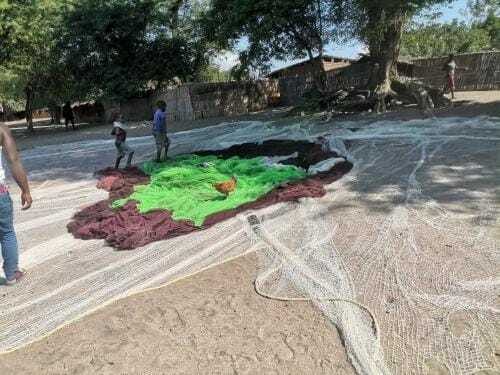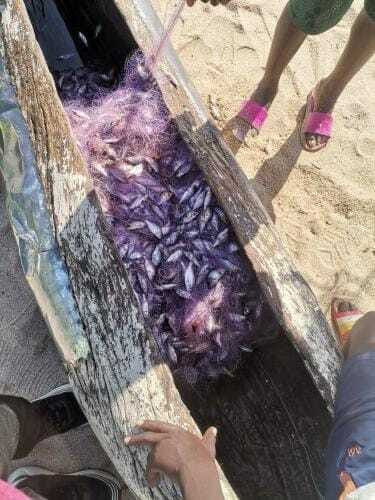
Malawi: Malawi's underfunding of the fishing sector is jeopardising its management of the country's bodies of water. Districts that are supposed to receive a share of the national budget for fisheries resource management are yawning due to a lack of funds, writes Owen Nyaka.
According to figures from the Lakeshore District Fisheries office in Salima, there was a funding allocation of MK6, 232,440 kwacha in the 2015/16 fiscal year.
This funding has been increased, but only marginally since 2015. Salima District Fisheries had only MK10, 933, 707 kwacha in 2020/21.
The funding levels for lakeshore and inland districts are nearly identical; for example, the funding for Zomba district has always been less than K800,000 per month for all operations, including utility bills and maintenance costs.
Management of fisheries resources has been difficult as a result of inadequate funding. Staff from the Fisheries Department are unable to monitor, particularly during closed seasons, which typically occur between November and March to allow fish to spawn.
Poor fish catches across the Lakeshore districts are being exacerbated by a lack of resources and ineffective enforcement.
According to the Department's 2017 Framework Survey report, Chambo (tilapia) catches in Salima district have declined, with the highest production being recorded in 2008 (334.65 metric tonnes) and the district recording a production figure of 34.96 metric tonnes in 2014, representing a drop of 259.18%.
According to the Fisheries Framework Survey conducted four years ago, the Salima district registered one unit of pair trawler and 1, 487 crafts, the majority of which were dugout canoes.
There were over 242 engines, with Senga Bay having the most (47%), Domira Bay having 28%, and Chipoka having 25%. The total number of boats with engines was 134, with Senga Bay accounting for 65%, Chipoka accounting for 24%, and Domira Bay accounting for 11%.
Planked canoes had the lowest composition with 36, but dugout canoes were the most dominant and abundant fish craft in the Salima district, accounting for more than 72%.

This is due to the fact that most motorised boats for Chilimira required dugout canoes as peripherals for operation.
It is also less expensive than other fishing crafts and is a popular subsistence fishery.
This indicates that they are putting a lot of pressure on the Utaka and Usipa fish species.
According to fishing experts, the problem is imminent when the operation is carried out onshore, where most juveniles can be prime targets. Technically, this is a major concern because the gear has been at that high level of record for some time, making monitoring the operation of the gear in the district difficult.
Despite the fact that underfunding in the fishing sector has made monitoring and operation of illegal gear difficult - the fisheries industry employs over 500, 000 people in fish-related activities.
Fish also provide approximately 60% of animal protein and provide employment for over 70,000 people through fishing and fish farming.
However, the decline in fish production can be attributed to the ever-increasing number of illegal gears (Ngongongo), which are putting enormous strain on the fisheries’ resources.
According to the Fisheries Framework Survey of 2017, illegal fish gear accounts for more than 62% of gear in the Salima district.
In 2007, eleven (11) different types of fishing gear were recorded as being active in the district.
Until now, the gear in the district has not been licenced, and it is possible that this is one of the reasons for the proliferation of the gear in the district.
It is obvious that anglers are choosing smaller-mesh gear to increase their chances of catching fish.
Worse, the district of Salima currently has only two enforcers who are expected to monitor illegal fish gear.
The situation is similar in most Lakeshore districts, with the exception of Nkhata-Bay, which has sixteen (16) staff but only two in the enforcement section, and upland Zomba, which covers Lake Chirwa, which has no enforcement officer.
The importance of fisheries law enforcement and inspection is to keep an effective fisheries inspectorate in place to assist local communities in the development and enforcement of fisheries regulations and by-laws.
As a result, the current shortage of enforcement and inspection officers in most lakeshore districts is extremely retrogressive, as these officers are responsible for enforcing and monitoring compliance with fisheries regulations.
Checking mesh sizes of fishing gears, confiscating illegal fishing gears, conducting gear licencing campaigns, enforcing the close season, mounting roadblocks to check Kasawala and young Mpasa, checking markets, and inspecting and certifying shipments of live ornamental fish for Aquarist Traders are all tasks performed by enforcement officers.
They are also in charge of collecting revenue by licencing legal fishing gear.
"As a district, we need at least five (5) people for enforcement of fisheries regulations," says Salima District Fisheries Officer Patrick Zakeyu, "but currently we only have two people working under enforcement, the other officer work under fisheries extension."
However, in order to combat fish resource depletion, the United States Agency for International Development (USAID) and Pact Malawi are collaborating on the 'Restoring Fisheries for Sustainable Livelihoods in Lake Malawi (REFRESH) Project.
The REFRESH project appears to be one solution because it aims to conserve Lake Malawi's freshwater biodiversity by restoring natural fisheries productivity in the lakeshore districts of Karonga, Rumphi, Likoma, Nkhata Bay, Nkhotakota, Dedza, Mangochi, and Salima.
The project is being carried out in collaboration with five partners: African Parks, Find Your Feet, Techno Serve, CRC, and CISER.
According to CISER Programs Manager Felix Sanudi, the fishery sector is severely underfunded despite having enormous potential to contribute significantly to the national GDP.
In the face of underfunding, he said, CISER is building the capacity of local communities in Mangochi district in participatory fisheries management through the REFRESH project, so that they can manage fisheries resources on their own.
Sanudi claims that beach village committees (BVCs) have been trained and equipped to carry out the six policy steps outlined in the national statutes. The BVCs are then tasked with carrying out ecosystem-based fisheries management activities.
According to Sanudi, these activities include enforcement patrols, beach sanitation, sanctuary management, and environmental restoration initiatives.
The BVC is taught and encouraged to have self-financing mechanisms in place in order to finance their operations through funds from beach landing fees, private paying toilets on the beach, hire of fish drying racks, and others even into livestock farming, to name a few.
According to REFLESH Technician Elijah Katantha, at Msaka in Mangochi, NAMASO BVC raises goats as a self-financing mechanism.
With this approach, communities share responsibility for managing fisheries with the government, reducing the government's fisheries management burden. This approach fosters a sense of ownership in resource management at the community level and facilitates fisheries management.
With the current project in place, communities fully understand their role and the need for sustainable utilisation of fisheries resources, and such an initiative is one of the solutions to curb illegal fishing.
Idrisah Jamali, 41, of Chitenje Village, Traditional Authority Chowe in Mangochi, who violated section 14 (1) of the Fisheries, Conservation and Management Act by using illegal fishing, was recently convicted and sentenced to three and a half years imprisonment with hard labour for fishing using Seine net without a licence in Mangochi.